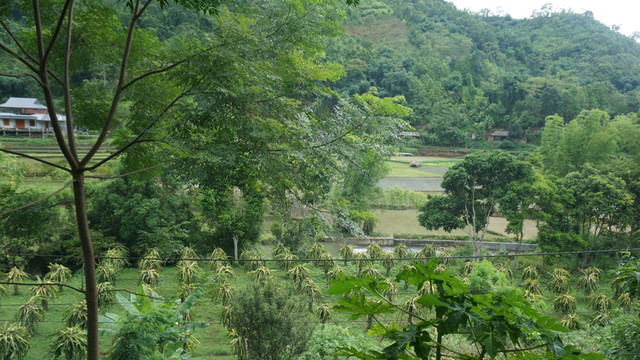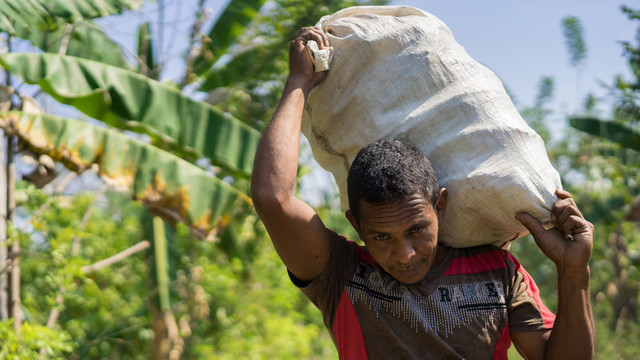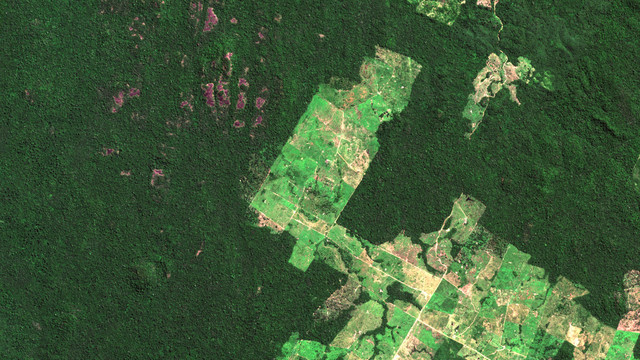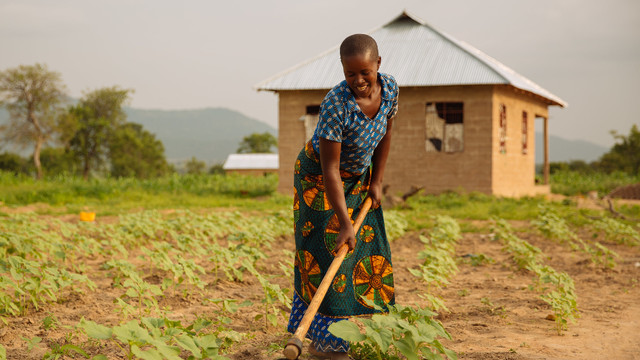
Photo credit: Mike Goldwater
Land is cheap and is perceived to be abundant in Africa. A scramble for its land, following the food and fuel crisis three years ago, is on. European and North American companies have been acquiring land to grow export and biofuel crops and to supply their need for pulp and paper. Now they’re being joined by newly emerging economies – in particular Brazil, India and China – which are also increasingly acquiring large tracts of land and searching for other natural resources, in particular water and minerals.
A land grab is on in my own country, Mozambique. For example, the government of Mozambique is allocating 60,000 km2 of land (7.6% of the country) in four of its provinces – Nampula, Niassa, Zambezia and Cabo Delgado – to 40 Brazilian farmers for commercial soy cultivation to supply the ever-expanding Chinese market. The land would be granted for 50 years, with the lease renewable for a further 50 years. The Mozambican government says that the investment will bring benefits to the country: “Brazilian farmers have accumulated experience that is very welcome” said Mozambique’s agriculture minister, José Pacheco in this article. “We want to repeat in Mozambique what they managed to do in the Brazilian ‘cerrado’ 30 years ago,” Pacheco added.
These plans threaten to convert the rich forests found in the provinces of Nampula, Niassa, Cabo Delgado and Zambezia into soy plantations. These provinces are already under enormous pressure due to activities such as commercial agriculture, industrial plantations, logging, biofuel farming and mining.
Hopes dashed for Mozambique
Having worked on community-based natural resources management for many years, I always felt that there was a missing link between efforts to change unsustainable land use practices, such as slash and burn agriculture and charcoal production, and the need to compensate for the resulting benefits of maintaining those resources sustainably, such as carbon stocks, watershed maintenance, biodiversity, etc. When sustainable forest management efforts to mitigate climate change evolved into REDD+, my optimism that something fundamental was about to change for the better was renewed.
Put simply, REDD+ intends to develop financing mechanisms that will compensate developing countries as an incentive for changing the way forest resources are used to curb CO2 emissions. The performance based compensation will pay for actions that prevent forest loss or degradation, conservation, the sustainable management of forests and enhancement of carbon stocks.
I hoped that timber concessionaires would have additional incentives to implement management plans and improve processing efficiency. I found myself encouraged by the fact that governments would think twice before allocating land to large-scale commercial agricultural companies for growing crops such as soy, which is not even essential to meeting food security needs in Mozambique! I sincerely expected that the Mozambican government would take advantage of REDD+ to improve land resource knowledge, to plan where to use the land and for what, to enforce local communities’ rights to land and other resources, including carbon, to generate additional national income that could possibly improve law enforcement and overall monitoring of land uses. Needless to say, the optimism that I and others felt, was short lived.
REDD+: Race for land is on
REDD+ is now driving a race for land in Mozambique. The good news is that there has been a national, consultative process to formulate a REDD+ strategy and identify pilot areas for protection within the country. The map below shows areas identified during consultations to inform the government on priority areas for REDD+ testing.
Areas in red represent provinces that have been consulted, which have also been selected as pilots. Some of these provinces, Nampula, Niassa and Zambezia, are already under enormous pressure and are soon to have soy plantations established there as well (mentioned above).

The area in yellow (Manica) was also identified as a pilot given its importance for forest conservation amidst threats of conversion by local medium-scale farmers to banana plantations (for example around Morribane Forest Reserve) or by agricultural companies to grow biofuels. For example, a South African company has already secured a land concession of about 180 Km2 in Sussundenga district, near to the pilot area, to grow sugarcane, which will be converted into bioethanol.
But the development of this information for REDD planning has had an unexpected and unforeseen consequence. The map below represents areas where a company with British capital wants to ‘invest’ in REDD+ projects. The total area identified is 150 000 Km2, equivalent to 15 million ha or 19% of the country’s surface. The selection of areas for this private ‘investment’ was based on the proposed REDD+ pilots.

Existing large-scale plantations in Niassa and Nampula are also taking advantage of REDD+ and the Clean Development Mechanism, by seeking to certify the plantations as carbon sinks. The Clean Development Mechanism allows projects in developing countries reducing emissions (by growing trees) to earn credits, which can be traded and sold, and used by industrialized countries to meet a part of their emission reduction targets under the Kyoto Protocol.
Other private investors have submitted applications for REDD+ investments. According to a Mozambican government official who spoke to me confidentially, some companies state that they ‘do not need rights to the land itself, but only to the carbon stocks – the trees on the land – to gain carbon credits to sell in the market’. Of course, this is nonsense, because by default this means that they are using the land, and that no one else can. Such discourse either shows ignorance or tactical deceit to cut out red tape and speed up the authorization of the investment.
And it’s not just private investors. Non-governmental organisations are getting into the act as well. International NGOs such as the Flora and Fauna International in Niassa, and the French Forest Services in Zambézia (Gile Forest reserve) are equally seeking land for REDD+ projects.
Am I witnessing the creation of generations of landless people in Mozambique and Africa in general?
Risks
There are many risks involved:
- Private investors focused on profit maximization, could create fenced in ‘private conservation areas’ that keep local people out; international organizations also rushing to establish REDD+ pilots may also adopt similar strategy
- Local people and national governments risk losing their rights to access land they have used for generations, which in turn will impact upon their food security.
Is Mozambique ready for REDD+ ?
There is so much at stake. Large scale investments not aligned with sustainable and social justice practices will not necessarily deliver secure jobs for either unskilled or skilled people. And it does not contribute to increasing tax revenue and GDP as fiscal incentives for ‘attracting’ businesses impede the realization of tangible monetary gains for Mozambique.
If structured in the right way, REDD+ could store carbon, conserve biodiversity, alleviate poverty and provide additional incentives to ensure economic benefits from the sustainable use of forests.
Unclear or insecure forest tenure is an indirect driver of deforestation and forest degradation. Clarifying forest tenure is important to help ensure that poor forest dwellers and local communities aren’t excluded or evicted from land that they have lived on for generations, and can provide them with greater leverage in national REDD+ processes. http://capacity4dev.ec.europa.eu/eu-working-group-land-issues/document/redd-and-tenure-review-latest-developments-research-implementation-and-debate. Land and forest tenure discussions were part of the REDD consultation process, and the REDD+ working group are looking at Mozambican legislation regarding carbon rights and how to protect local communities’ access to resources. But this needs to be completed before REDD+ can be implemented.
In addition, concerns have been raised that many of the relevant REDD+ governance institutions, could be promoting the use of monoculture tree plantations as carbon sinks which raises concerns about the potential impact of REDD+ on the country’s forest biodiversity.
It is counterproductive to develop REDD+ strategies while signing ‘blank cheques’ giving away land for establishing monoculture forests and agriculture plantations. Like so many other African countries, Mozambique is not yet ready for REDD+. Getting REDD+ governance institutions right, is the key priority for REDD+ and for ensuring sustainable development in the country.




